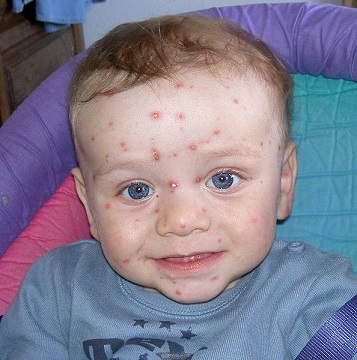Infectious diseases
The infectious diseases are caused by pathogenic microorganisms or substances produced by them. These microscopic beings can be made up of one or more cells or even be acellular![]() .
.
- Bacteria: prokaryotic unicellular beings, without a nuclear membrane, causing diseases such as diphtheria, salmonellosis, pneumonia, tuberculosis, cholera and tetanus, among others.
Activity: Classification of bacteria by their shape.
Song: Yes, I know you are remembering the song "I am a bacterium".
- Fungi: Eukaryotic and heterotrophic unicellular or multicellular organisms. They live in different environments, such as:
- Saprophytic fungi: They live in humid places on dead organic matter
 .
. - Parasitic fungi: They live inside or outside of other living beings, which they harm. They are disease-causing fungi.
- Symbiotic fungi: They live associated with algae, forming lichens.
- Saprophytic fungi: They live in humid places on dead organic matter

By Bobjgalindo (Own work) [GFDL or CC BY-SA 4.0-3.0-2.5-2.0-1.0], via Wikimedia Commons
Examples of diseases (mycoses) are fungal ringworm and candidiasis.
- Protozoa: They are eukaryotic unicellular organisms that live in water and some, in liquids such as blood. They are the cause of diseases such as malaria and sleeping sickness
 .
. - Viruses: They are not true living beings, as they are acellular. They are obligate parasites and always need to take advantage of a cell's structure and metabolism in order to reproduce. Some examples of diseases caused by viruses are rubella, chickenpox, measles, flu, and AIDS.
Activity: Diseases according to the type of microorganism that causes them.
